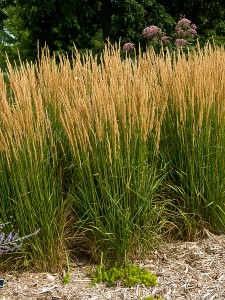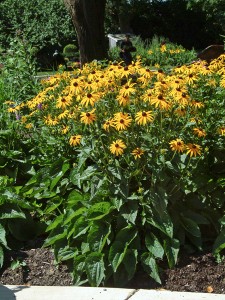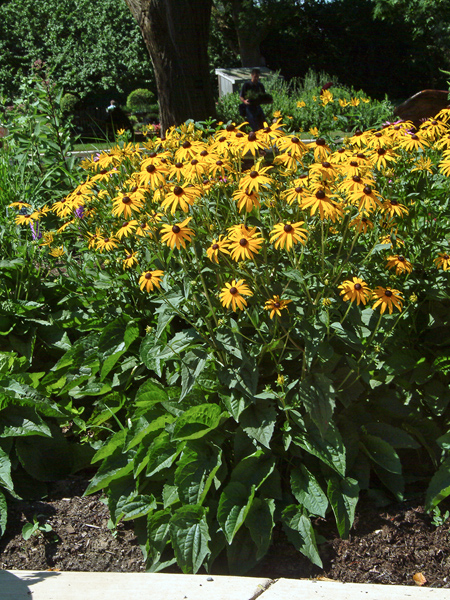Submitted by Mary Jo Buza
 Perennials have quickly gained popularity with gardeners as a way to extend flowering throughout summer and into fall. They do, however, require periodic division to maintain healthy growth and prolific flowers. By definition, division is the removing of the oldest portion of the plant, and then replanting the portion that possesses vigorous new growth.
Perennials have quickly gained popularity with gardeners as a way to extend flowering throughout summer and into fall. They do, however, require periodic division to maintain healthy growth and prolific flowers. By definition, division is the removing of the oldest portion of the plant, and then replanting the portion that possesses vigorous new growth.
When to Divide
September and early October is a good time of year to divide perennials. The soil is still warm and once divided the plant will have time to send out new roots before the cold wind of winter strikes. The cool air temperatures and warm soils in the fall minimize stress and at the same time promotes rapid recovery. Another benefit of dividing perennials in the fall rather than the spring is to give the plant plenty of time to grow new roots before the stress of next summer’s hot days.
Perennials with fleshy roots like bulbs, tubers, and rhizomes are also divided in the fall. This includes iris, peonies, oriental poppies, and lilies. In contrast, many shrubby perennials are never divided this includes: Lavender, Russia Sage, Salvia, and Santolina.
How to Divide
Dividing perennials often seems like radical surgery and intimidates many gardeners. The first step is to remove the entire plant from the soil. Gently wash or shake the soil from the roots so you can clearly see the new growth. Many perennials like Astilbe, Rudbeckia and Hosta cannot be broken or gently pulled apart but require a knife or pruners to cut through the stems and roots to create the new divisions.
I generally divide a single large perennial into three for four pieces. Actual separation, however; depends on the size of the clump and the nature of the root system. As a guide each new division needs at least six eyes or shoots. In comparison, many bulbs like Lilies, easily come apart and require no cutting.
Replanting New Divisions
Before replanting new divisions always add three to four inches of organic matter back into the soil. This could be compost or well-aged manure. Do not use peat moss. It has no nutrients. If you have sandy or rocky soil, do not hesitate to use more organic matter than I suggest here. Place the plant in the hole so that the roots are spread out evenly. Water new divisions immediately and keep moist for week or so. Giving new starts a weak solution of organic fertilizer like fish fertilizer will help them re-establish themselves quickly.
How Often to Divide Perennials
 * The following recommendations assume good growing conditions and healthy plants.
* The following recommendations assume good growing conditions and healthy plants.
| Divide every 3 years
Aster Bearded Iris Bee Balm Crocosmia Delphinium Phlox (tall)
|
Divide every 5 years
Armeria Astilbe Coral Bells Coreopsis Lambs Ear Liatris Lily bulbs Purple Coneflower Rudbeckia Daylily |
Divide every 7 or so..
Candytuft Hardy Geranium Hosta Ornamental Grasses Sedum Siberian Iris
|
||
Author Mary Jo Buza, is a landscape designer. She more than 25 years experience designing, and teaching gardening in the South Sound region. For more information on a custom landscape design or consultation call her at 923-1733 or visit her website.


















































